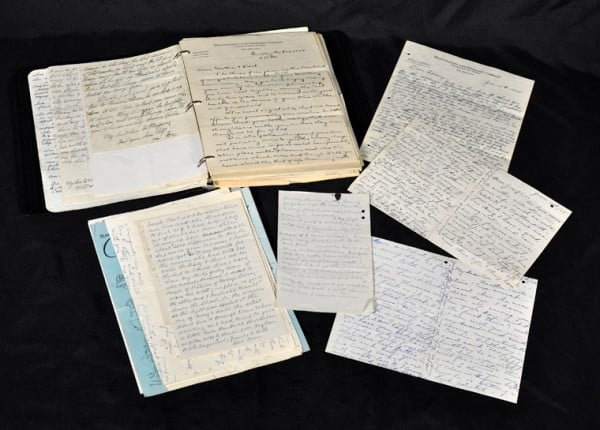If you have old letters in your family archive here are some tips to help preserve these wonderful treasures.
Find a Clean Place to Work
Before you open that shoebox full of letters, find a clean workspace where you can spread out your collection. Always wash your hands before handling old letters, photographs, and documents, or wear nitrile gloves. Never have food or beverages near your old letters and artifacts, as an accidental spill could spell disaster.

A typical World War II-era letter, postmarked December 4, 1943. Many patriotic-themed envelopes and stamps were created during this period, thus the “Liberty Above All – For All” color imprint, and the “V for Victory” stamp. Nestled inside this envelope, almost as fresh as the day it was mailed, was a hand-written letter and a photograph of two soldiers. This family artifact has survived intact since the middle of the last century, and it is our job as family archivists to make sure it survives well into the next!

Handle With Care
Consider placing your letters and documents in acid-free envelopes, crystal clear bags, or pocket pages, all of which will keep delicate papers from being exposed to harmful dust, moisture and household pollutants. You can place them in elegant three-ring binders and slipcases if they are in archival binder pages. Another option is acid-free boxes that come in a variety of sizes, depths, and colors. You can also keep your letters safe in acid-free file folders, or a document storage kit, which has everything you need in an all-in-one kit.




Store Well
Keep all of your historic and contemporary letters and documents in a cool, dry, dark place away from excess humidity, water, and light. While perhaps stored for years in the attic or basement, these locations are not ideal for preserving old letters. This is because the wide fluctuations in temperature and humidity can harm papers, inks, photographs, and other such artifacts.
The ideal place to store a set of letters is in an indoor closet or shelf (away from direct sunlight) in your living space. This storage placement will also prevent excess moisture from wrinkling the pages or perhaps causing the ink to run, and the lack of excess light will keep the letters from fading over time.
Contact Us
If you have any additional questions on preserving old letters or would like more information on the archival storage and presentation materials that are right for you, please contact us here at Archival Methods. We’re always there to help with any archiving, storage, or presentation questions you may have.

